Of the many possible coat colors in goats, brown is one of the most common ones.
Goats come in various shades of brown, including chocolate brown, dark brown, pale brown, and reddish-brown.
If you are looking to know more about goats with brown coats of any shade, you are on the right page. In the rest of this article, we discuss 13 brown goat breeds.
Brown Shorthair Goats
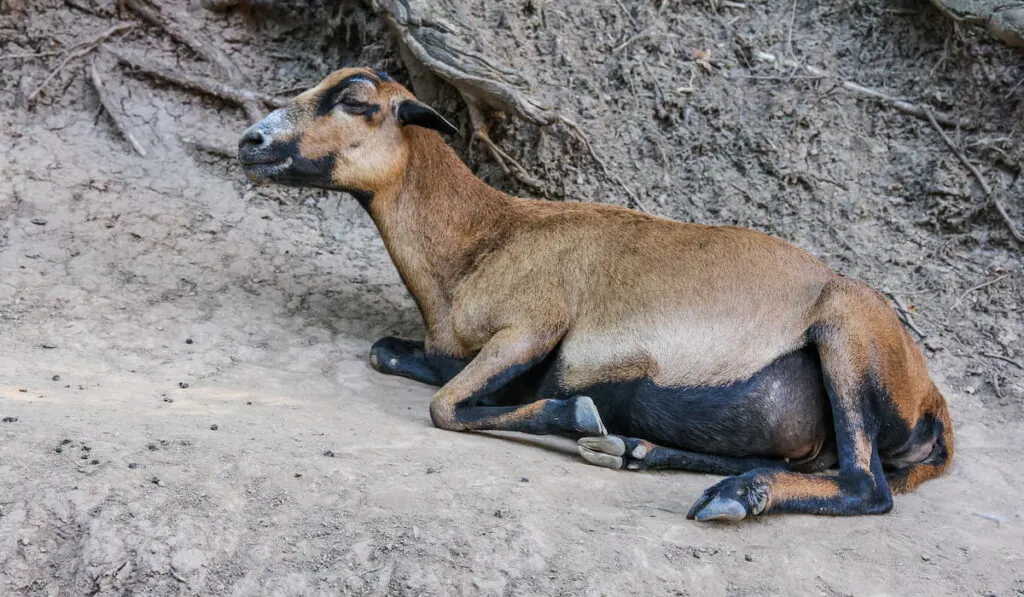
Initially, the Brown Shorthair Goat had an uneven color. But towards the end of the 19th century, the breed was improved.
This improvement was achieved by crossing Brown Shorthair Does with German Brown Bucks. By 1954-1955, the Brown Shorthair Goat became an autonomous breed.
You will find this goat breed dispersed across the western and northern mountain regions of the Czech Republic.
Brown Shorthair Goats have black eel stripes which run from their cantle to the tip of their tail. Their hoofs, belly, and shank are also black, and they have upright ears. About 80% of them are hornless.
The Brown Shorthair Goat shares some similarities with the German Brown. For one, both breeds have dark-brown or cinnamon coats with glossy short hair.
Erzgebirge Goats
The Erzgebirge, which can also be called Erzgebirgsziege or Passeirer Gebirgsziege, is a goat breed native to Germany’s Saxony region.
Erzgebirge goats have reddish-brown coats with black stripes on their legs, faces, and backs.
The Erzgebirge is polled and used primarily for milk production. This goat breed is listed as critically endangered.
Chamois Colored Goats
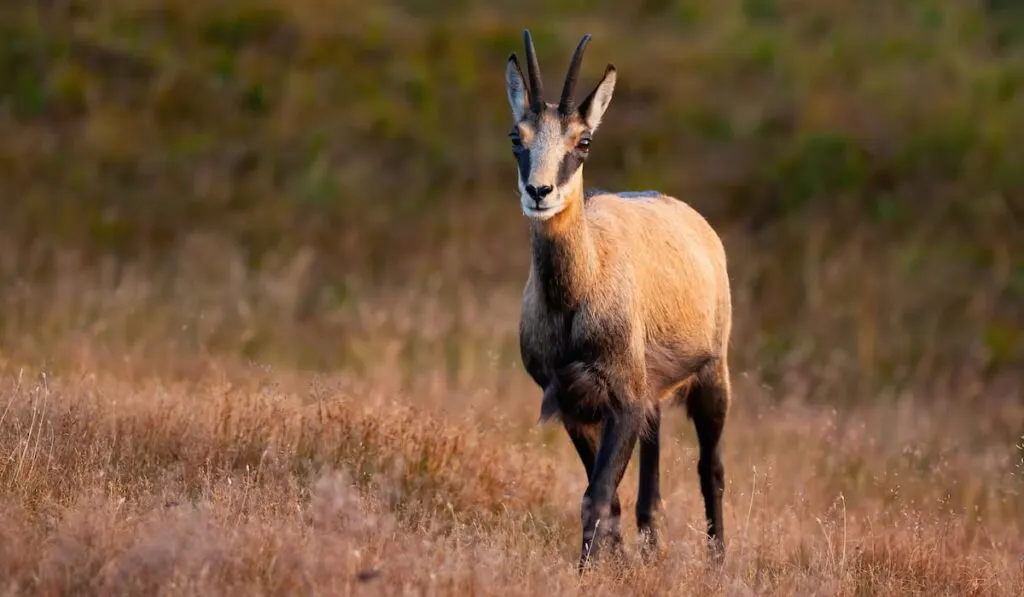
The Chamois Colored Goat is also known as Camosciata delle Alpi, Gämsfarbige Gebirgsziege, or Chèvre chamoisée in Italian, German, and French, respectively.
It is an indigenous domestic goat breed from Switzerland.
There are two types of Chamois Colored Goat. The first is horned and found in Graubünden or Grisons towards the eastern part of the country.
The other is hornless and found around Brienz, central Switzerland. The hornless variety is considered a separate breed in some countries and is called the Oberhasli goat.
Kri-Kri Goats
The Kri-kri is also known as the Agrimi, Cretan Ibex goat, or Cretan.
Kri-kri is a feral goat native to the Eastern Mediterranean, specifically Crete island and three other offshore islands, namely Agii Pantes, Thodorou, and Dia.
The coat of a Kri-Kri goat is light brown with a dark band around its neck. Both genders have horns, which sweep to the back of their head.
Most people believe Kri-Kri goats are not indigenous to Crete.
According to them, these goats were imported during the Minoan civilization. However, this goat breed is found nowhere else.
Nubian Goats
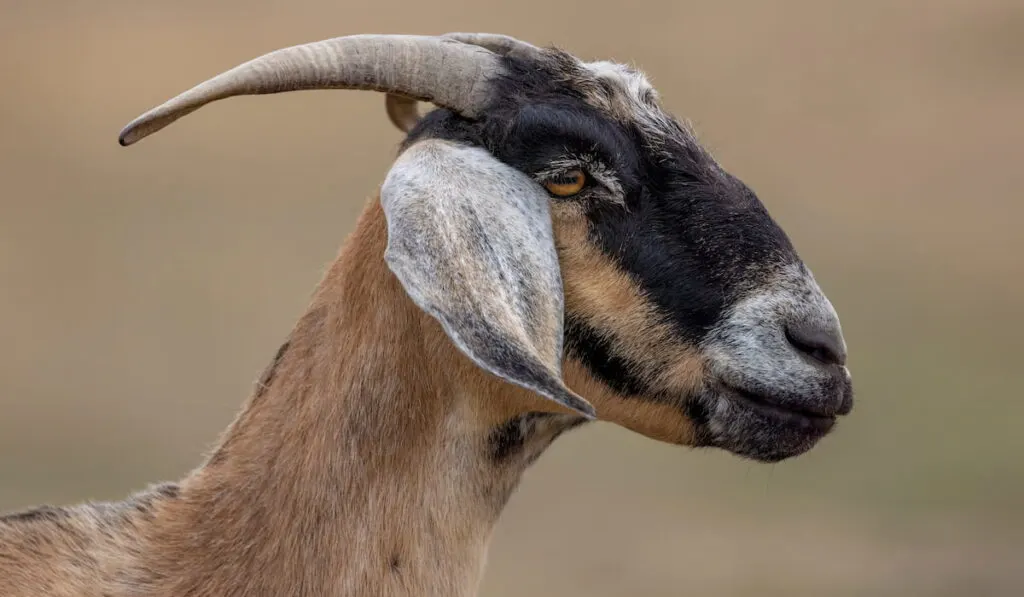
The Nubian, also known as Anglo Nubian, is an all-purpose goat breed used for skin, meat, and milk production. The Nubian is well known for the high butterfat content in its milk.
The Nubian was created by crossing local breeds and imported bucks in England. The colors of this breed tend to vary, but the most common are white and brown.
The average male Nubian weighs around 154 pounds, while females weigh 132 pounds.
The production rate of Nubians is decent but lower than that of Swiss breeds.
In general, Nubian goats are hardy, and they adapt readily to the tropics.
Toggenburg Goats
Toggenburg is another goat breed native to Switzerland. While it originated from Switzerland, it may be found all over the world.
Toggenburgs are small-sized to medium-sized. The average female Toggenburg weighs around 110 pounds while males weigh 143 pounds.
With the proper nutrition and care, Toggenburg can produce about 2-2.5 liters of milk every day.
The coats of Toggenburg goats can either be light brown or mouse grey, with white Swiss markings. Also, the bucks and the does can either be horned or polled.
Jamnapari Goats
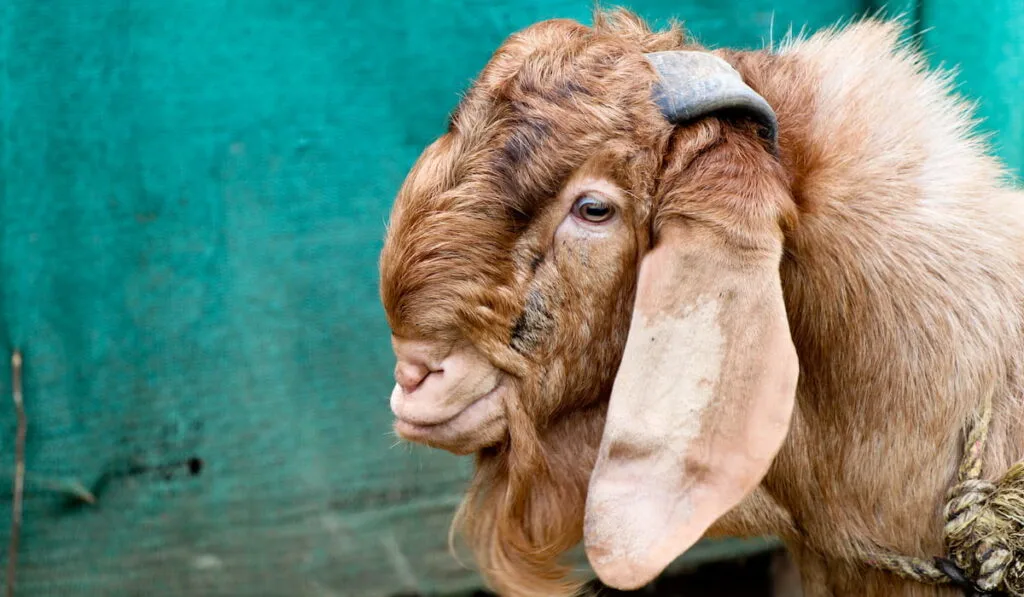
The Jamnapari is a breed of large goats native to India.
Its ears are large and looped, and its coat comes in several colors, with brown and black being the most common.
Adult Jamnapari can weigh between 143 and 165 pounds.
The Jamnapari can adapt well in the tropics and has the potential for meat and milk production.
Alpine Goats
Alpine goats are sometimes called Alpine Dairy.
They are medium-sized goats used for milk production. Alpine goats are natives of the Alps, and they may also be called the French Alpine.
The faces of Alpine goats are straight with a roman nose. They have a dish face, erect ears, no set markings, and they are horned.
Mature female Alpine goats can weigh around 125 pounds with a height of about 30 inches at the shoulder. The bucks weigh at least 135 pounds with a height of at least 34 inches.
Alpine goats come in a range of colors, including grey, white, black, and brown.
American Cashmere Goats
American Cashmere Goats were developed when Spanish meat goats were crossed with wild Australian goats.
Although American Cashmere goats are considered rare, the herd in North America continues to grow.
Every summer, American Cashmere goats begin to grow new coats of cashmere. When spring begins, the cashmere fibers begin to loosen and shed.
The cashmere fiber color is usually light cream, grey, chocolate brown, or white.
American Cashmere goats are easy-going, intelligent, and friendly. They get along with children, each other, and other animals like horses and cattle.
Black Bengal Goats
Black Bengal is native to Bangladesh and northeastern India.
It is a breed of small-sized goats used for dairy and meat production. An adult male Black Bengal weighs about 55-66 pounds while females weigh 44-55 pounds.
The Black Bengals have short legs and short horns. They are bearded, with tiny ears and a short coat.
While their coat is usually black, it may also come in white, grey, or brown.
Black Bengals are poor at producing milk, but their milk is of high quality. Their skin is also topnotch.
Female Black Bengal become pregnant twice a year, giving birth to 2-3 kids.
All in all, Black Bengals are very healthy and are also adaptable to most environments.
Booted Goats
Booted Goats are a Swiss-type of Mountain Goats. These goats are horned, robust, and lively.
They come in several colors, ranging from dark red-brown to dark brown with brown or black markings.
Booted Goats were purposefully bred until the 1920s. They nearly became extinct in the 1980s, but fortunately, they were rescued from extinction by the Pro Specie Rara Foundation.
Booted Goats are mainly bred in eastern Switzerland. However, there are individual breeding groups in the western and central parts of the country.
Damascus Goats
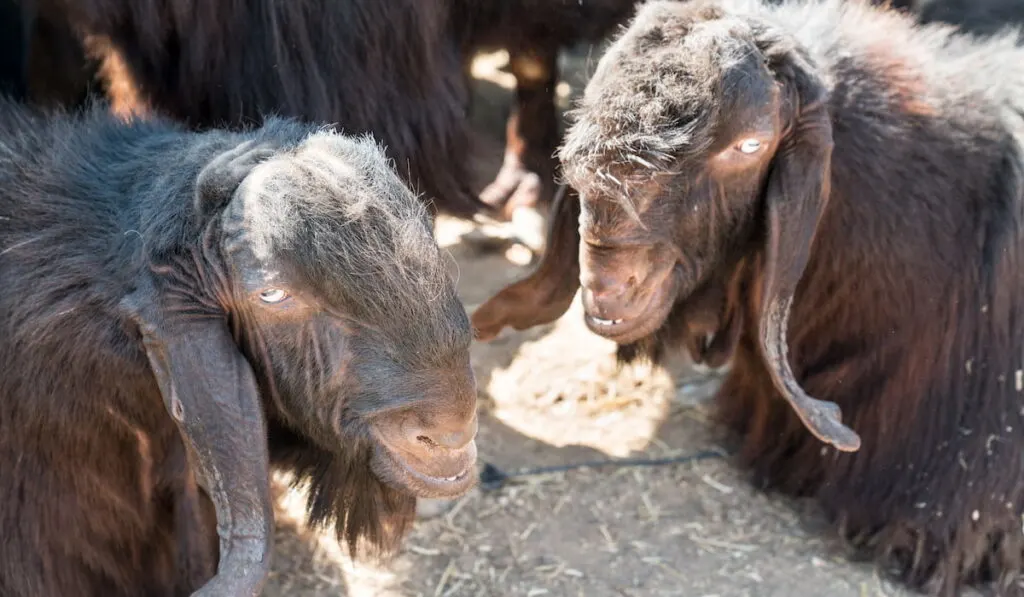
Damascus Goats are also known as Chami, Baladi, Shami, Halep, Damascene, or Aleppo goats. They are raised in Lebanon and Syria, where they are used for milk production.
Damascus is a Nubian type of goat breed. Their coats are usually brown or red.
However, they can also be grey or pied. They have long hair and can be either polled or horned.
Irish Goats
Irish Goats are found in Ireland and are used for skin, milk, and meat production.
Although Irish Goats are not native to Ireland, they have been raised in Ireland for a long time.
Irish goats come in several colors, but they are usually a mixture of brown, grey, and black. Both male and female goats are horned, with the males being larger.
Feral populations are found in many areas due to them being deliberately released or their escape from captivity.
Luckily, they are nimble-footed on cliffs and crags. So, they can reach some mountainous vegetation.
